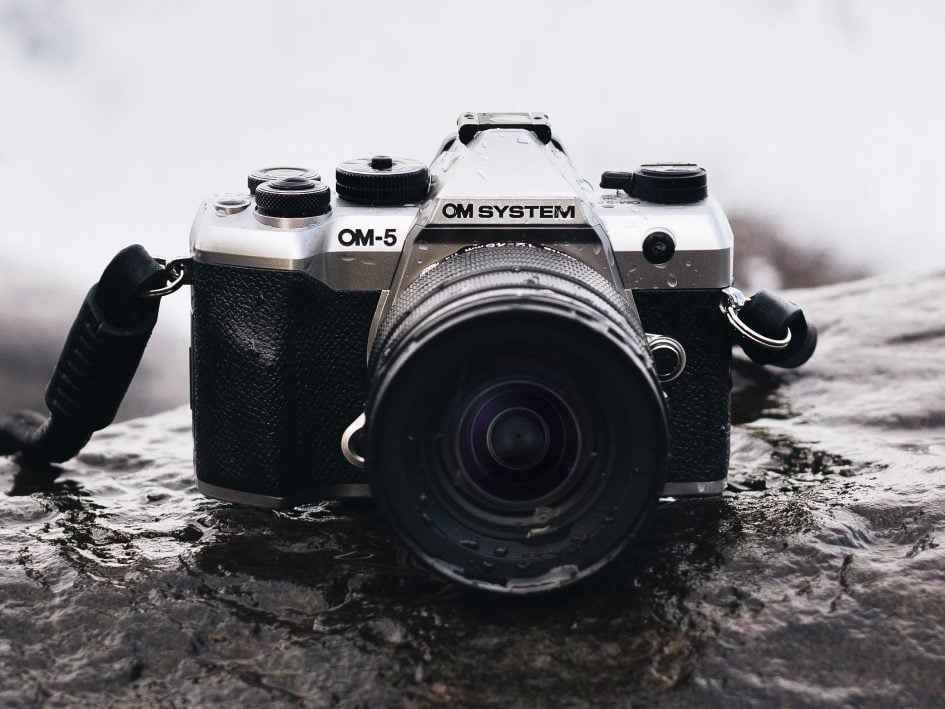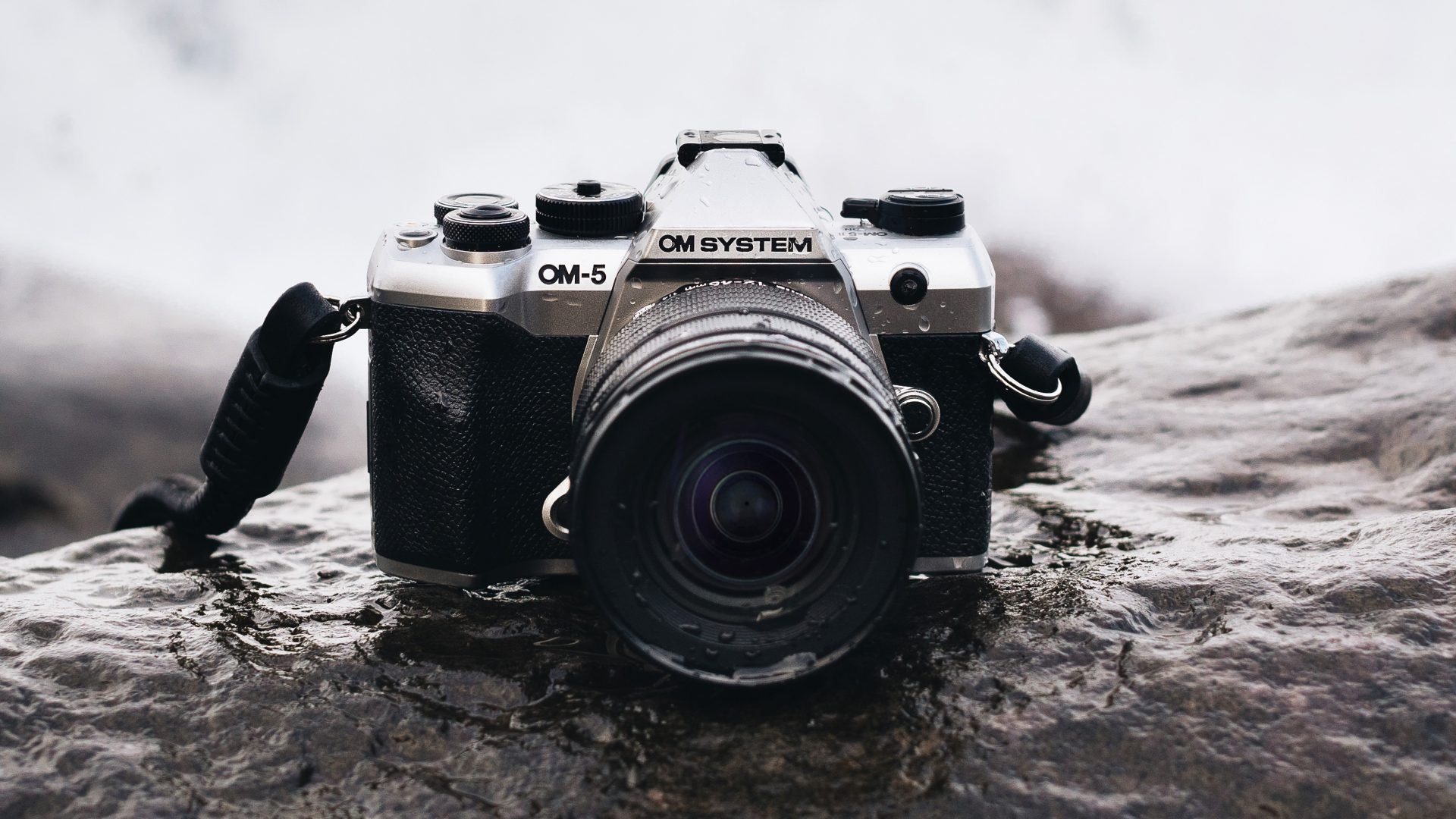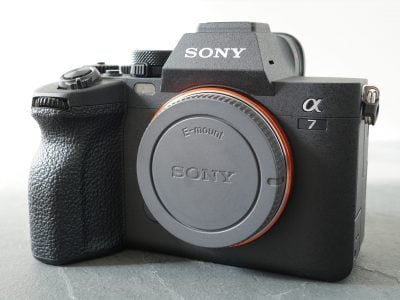OM System OM-5 Mark II review so far
-
-
Written by Gordon Laing
The OM System OM-5 Mark II is a compact mirrorless camera that’s part of the Micro Four Thirds system. Launched in June 2025 and costing around £1100 for the body alone, it’s the successor to the original OM-5 from 2022. It’s available in three colours with a new Sand Beige option, kind of like a mild-khaki joining the more traditional silver or black options. In some regions, Sand Beige may be exclusive to some retailers, for example, in the UK I believe it’ll only be available from WEX or OM System’s own website.
So that’s the first of the new features for the OM-5 Mark II, which only represents a mild refresh over its predecessor. Indeed many of the core features remain the same as the EM-5 Mark III before that.
Unsurprisingly it inherits the same 20 Megapixel Live MOS Four Thirds sensor with phase-detect autofocus, so the image quality and overall speed is going to be essentially the same as before. In contrast, the higher-end OM-3 and OM-1 Mark II both sport quicker stacked sensors for faster bursts, reduced skewing and higher video frame rates, albeit with the same photo resolution.

If you fancy more detail though, the OM-5 Mark II shares the High Resolution mode of its predecessors, which employs the pixel-shifting to capture multiple frames in an electronic burst that are then combined into a single image later. It can do this in RAW too, but flash isn’t supported. As with similar modes, there’s a genuine boost in detail and reduction of colour moire, although the risk of motion artefacts for elements that moved during the capture process. Note there’s also a Handheld version, albeit generating a slightly lower res 50 Megapixel file.
Like its predecessors, the sensor is stabilised within the body, ironing out the wobbles with any lens you attach. OM System claims the same capabilities as the Mark I version, so up to 6.5 stops with unstabilised lenses, or up to 7.5 with those that support Sync IS.
Moving on, burst speeds are also the same as before, so that’s up to 30fps with the electronic shutter. The Pro Capture mode also remains available, capturing a rolling buffer of frames with a half-press and ready to commit them to memory with a full push. It supports 30fps with single AF, or 10fps with continuous AF.
The body remains essentially unchanged, but that’s no bad thing as you’re getting a vintage-styled compact design with loads of controls and resistance from dust and moisture with an actual IP53 rating – rarities at this price point. OM System has however enlarged the grip a little, making it more comfortable in your hand. They no longer sell a dedicated grip booster for it as with the Mark I version, but suggest third parties may fill this gap.
Looking around the body, you’ll see the same finger and thumb dials on the top, small but with great tactile feedback which can teach Fujifilm a thing or two. Unsurprisingly there’s no joystick as that’s reserved for the OM-1. Eagle-eyed OM System fans will notice the same layout as the previous OM-5 but that the button on the upper right which used to be dedicated to exposure compensation is now labelled CP. This stands for Computational Photography and like the OM-3, provides direct access to some of the neat modes that have long been a highlight on OM system cameras, and of course Olympus before them. Along with high res shot, there’s Live ND, Live Composite, eight-frame focus stacking, HDR and two-shot multiple exposure.
For composition, the OM-5 Mark II shares the same screen and viewfinder as its predecessor. So you’re getting a 2.36 million dot OLED EVF that feels more appropriate at this lower price point than the same spec on the OM-3. Meanwhile the 3in screen employs the same fairly coarse 1.04 million dots, but at least it still flips-out and twists to any angle, while also supporting broad touch control.
But while the means of composition is the same as before, look at those menus. Yes, in a major update, the OM-5 Mark II finally inherits the latest menu system of the OM-3 and OM-1 Mark II, not only waving goodbye to the often tortuous navigation of older models, but presenting a unified experience across the current series.
As before there’s a single card slot on the grip side, supporting UHS-II SD cards, while the camera remains powered by the same BLS-50 battery pack.
OM System has however swapped the old Micro USB port for USB-C, albeit I believe without support for the Power Delivery standard. You can at least still use it as a standard USB webcam though. As before there’s a microphone input, but sadly still no headphone jack. Note there’s a new RM-WR2 remote control accessory allowing wired or wireless control, while the older version is limited to wired operation only.
OM System says the autofocus system has been refined for human faces, detecting them when they’re smaller and allowing you to select between multiple targets. Sadly though the OM-5 Mark II doesn’t get the broader subject detection of the higher-end models, and while I can personally live without car and train detection, it would have been nice to have animal and bird recognition, especially considering OM system’s focus on wildlife and nature. Their absence is notable when cheaper rivals have it.
Moving onto video, the OM-5 Mark II inherits the same core capabilities with a few enhancements. 1080 is available from 24 to 60p and 4k from 24 to 30p, both uncropped and with continuous autofocus. It’s a shame for the Mark II not to offer 4k 60 even in a cropped mode, but in some consolation, the high speed mode now supports up to 240p in 1080 quality.
As before, you can record beyond half an hour, but now a red frame on the screen and EVF as well as a tally lamp on the front indicate you’re rolling. The OM-5 Mark II also offers a pair of cinema profiles which for some may deliver the effect they want out of camera, but if you prefer, OM-Log 400 is also available. But as before, the potential for grading is limited by the 8-bit depth at a time when most rivals offer 10 bit options.
OM System OM-5 Mark II verdict so far
And that’s all I can say until I’ve spent more time with the camera. The OM-5 Mark II may only represent a mild refresh over its predecessor, but remains an attractive option for those wanting a compact body to explore the Micro Four Thirds system, whether as a first-timer or a companion to a higher-end model.
It packs loads of physical controls, excellent IBIS and cunning computational modes into a light, weather-sealed body that looks and feels great in your hands. On the downside, the lack of subject detection other than humans is restrictive, while videographers will lament the lack of 10-bit or 4k 60.
Suffice it to say there’s plenty of rivals to consider at a similar price, most notably the Canon EOS R10 or a discounted R7, a Fujifilm X-M5 or X-T30 II, or maybe a Nikon Z-50 II. You could even go for an entry-level or discounted full-framer, like a Lumix S9 or Canon RP. All offer larger sensors, but most at this price lack IBIS and weather-sealing, not to mention access to a broad range of small lenses, so as always have a good think about what features are really most important to you in practice.
Meanwhile the Micro Four Thirds faithful may wonder why there’s still no updated PEN, surely the category the company could clean-up in. I do wonder why OM System continues to concentrate on wildlife and nature when they’re also ideal for street and general travel where Fujifilm has been so successful. Is it really down to the old PEN body not allowing the weather-sealing the company is known for?





